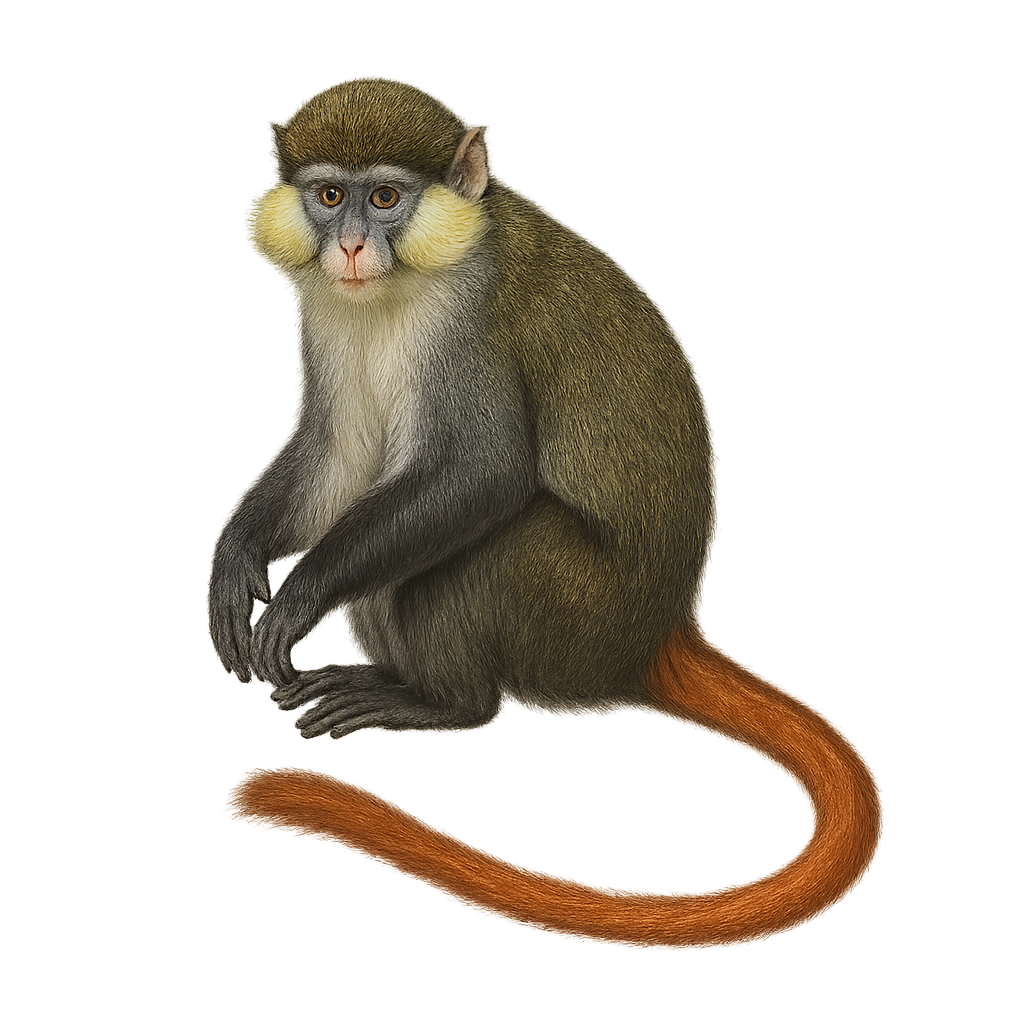Your wildlife photography guide.
Explore the red-tailed monkey in detail, study its behavior, prepare your shots.
Where to observe and photograph the red-tailed monkey in the wild
Learn where and when to spot the red-tailed monkey in the wild, how to identify the species based on distinctive features, and what natural environments it inhabits. The WildlifePhotographer app offers tailored photography tips that reflect the red-tailed monkey’s behavior, helping you capture better wildlife images. Explore the full species profile for key information including description, habitat, active periods, and approach techniques.
Red-tailed monkey
Scientific name: Cercopithecus ascanius

IUCN Status: Least Concern
Family: CERCOPITHECIDAE
Group: Mammals
Sensitivity to human approach: Suspicious
Minimum approach distance: 10 m
Rut period: August to October
Gestation: 160-170 jours
Births: January to March
Habitat:
Tropical forests, riparian forests, wooded savannas
Activity period :
Primarily active during the day, with peak activity in the morning and late afternoon.
Identification and description:
The Red-tailed monkey is an arboreal primate found mainly in the tropical forests of Central and East Africa. Recognizable by its distinctive red tail, it has a grey-green coat with white markings around the nose and eyes. This diurnal monkey lives in social groups of up to 30 individuals and primarily feeds on fruits, but also consumes leaves, flowers, and insects. Vocalizations are crucial for communication within the group, especially to alert others of predators. Although relatively common, deforestation and hunting pose threats to some local populations.
Recommended lens:
400 mm – adjust based on distance, desired framing (portrait or habitat), and approach conditions.
Photography tips:
To photograph the Red-tailed monkey, it is advisable to use a telephoto lens of at least 400mm to capture detailed images from a distance without disturbing the animal. Look for a spot where the monkeys are active, usually early in the morning or late in the afternoon. Be patient and discreet, avoiding sudden movements. Use a tripod to stabilize your camera and adjust settings for low light conditions under the canopy. Focus on moments when the monkey is actively feeding or interacting with other group members.
The WildlifePhotographer App is coming soon!
Be the first to explore the best nature spots, track rutting seasons, log your observations, and observe more wildlife.
Already 1 430 wildlife lovers subscribed worldwide

